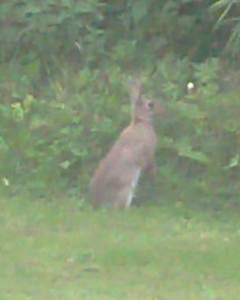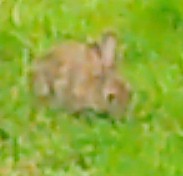European Wild Rabbits
 The Europenan Wild Rabbit (Oryctolagus Cuniculus) is a species of wild rabbit that is native to South West Europe, in particular Spain and Portugal, but has spread world wide (with the exceptions of Antarctica and Sub-saharan Africa) and is now regarded as an invasive species in many countries.
The Europenan Wild Rabbit (Oryctolagus Cuniculus) is a species of wild rabbit that is native to South West Europe, in particular Spain and Portugal, but has spread world wide (with the exceptions of Antarctica and Sub-saharan Africa) and is now regarded as an invasive species in many countries.
Recently there has been a decline of this rabbit in its native land due to habitat loss, over hunting and the rabbit diseases Myxomatotis and Rabbit haemorrhagic disease virus (rabbit calicivirus (RCV)). This decline of the species as lead to a downful of Iberian Lynx and the Spanish Iperial Eagle, both of whom relied mainly on the European rabbit as its main source of prey. In portugal the authorities have classified the rabbit as ‘near threatened’, whereas the spanish authorities say the european wild rabbit is ‘vulnerable’.
In other parts of the world the European wild rabbit is regarded as an invasive species due to the large populations. The place where European wild rabbits are said to be the most problematic is Australia, due to the lack of predators.
A female rabbit is known as a ‘doe’ and a male as a ‘buck’; babies are called ‘bunnies’, ‘kittens’ or ‘kits’. A group of rabbits is called a ‘colony’ or a ‘nest’.
When wild rabbits are not feeding they can most likely be find in their warrens, a system of complex tunnels underground that the rabbits often burrow themselves.
The length of a european wild rabbit varies from 13-18 inches. They can range from a dusty grey in colour to a dark brown. You can also get melanistic European wild rabbits, which is the opposite of albinoism. This is where there is an increased amount of dark pigment in the animal which results in melanin. This occurance is nearly always the result of genetic mutation, and it can run in families. (This is how you get other black animals such as the black panther).
Rabbits are grazing animals, and so will spend the majority of the time eating grass, leaves, seeds and other food it can find. It is thought that some rabbits have a built-in ‘radar’ mechanism which means they can smell which plants are poisonous to them.
In the wild rabbits are generally sociable animals, but when it comes to the mating season, males in particular become aggressive and will fight each other for the females. Rabbits can do much damage to each other by using their powerful hind limbs for kicking, their front paws for scratching and their teeth for biting. Males also get territorial of their ground and will mark ‘their land’ by urinating on it. Bucks will also spray urine at other rabbits (and their owners if they are pets) to show that the ‘intruder’ is on their land and maybe challenging them to a fight.
 The mating system for rabbits can be quite a complicating and interesting one. In the colony of rabbit the dominant males will usually mate with the dominant females. High status bucks will show polygyny (having more than one mate) whereas the lower stauts individuals, males and females, will often only have one mate, but this may be a different mate each year.
The mating system for rabbits can be quite a complicating and interesting one. In the colony of rabbit the dominant males will usually mate with the dominant females. High status bucks will show polygyny (having more than one mate) whereas the lower stauts individuals, males and females, will often only have one mate, but this may be a different mate each year.
Amazingly all pet rabbits come from the European rabbit species, as this is the only wild rabbit species to have been domesticated. They have shown great variation within the litters over the years with small lop bunnies, rex rabbits and giant flemish rabbits all being bred from the European wild rabbit.
 August 9, 2010
·
August 9, 2010
·  Maddia (Admin) ·
Maddia (Admin) ·  Comments Closed
Comments Closed
 Tags: european rabbit, european wild rabbit, rabbits, what do wild rabbits eat, wild rabbits · Posted in: Rabbit Breeds, Wild Rabbits
Tags: european rabbit, european wild rabbit, rabbits, what do wild rabbits eat, wild rabbits · Posted in: Rabbit Breeds, Wild Rabbits


